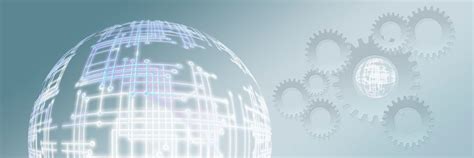
The digital age, while ushering in unprecedented levels of connectivity and innovation, has quietly created a massive environmental footprint. At the core of our modern world—from streaming video to artificial intelligence lies the data center, a facility that houses the computing infrastructure essential for storing, processing, and disseminating vast amounts of data. These nerve centers of the internet are indispensable, yet their colossal energy and resource consumption pose a significant sustainability challenge. This is why the concept of a sustainable data center, often termed a “green data center,” is not just a trend but an urgent necessity for future-proofing the digital economy.
The imperative for this ‘Green Shift’ is clear: data centers globally consume an alarming percentage of the world’s electricity. Moreover, their cooling systems often require millions of liters of water, and the lifecycle of their equipment contributes heavily to electronic waste (e-waste). A green data center fundamentally re-imagines this infrastructure, leveraging energy-efficient technologies, utilizing renewable resources, and minimizing environmental impact across its entire lifecycle—from construction to disposal. This comprehensive approach is vital for achieving greater resource efficiency, reducing operational costs, and fundamentally minimizing the carbon emissions that drive climate change.
The Unseen Environmental Cost of Digitalization
To truly appreciate the importance of sustainable data centers, one must first understand the scale of their impact. Data center energy usage is primarily driven by two components: the Information Technology (IT) equipment itself (servers, storage, networking) and the necessary support infrastructure, most notably the cooling systems.
1. Energy Consumption and Carbon Emissions
Data centers operate 24/7/365, making their cumulative energy demand staggering. The continuous operation of servers, combined with the power required to cool them, results in enormous electricity usage. This consumption translates directly into carbon emissions when the power source relies on fossil fuels. Leading technology companies have acknowledged this footprint, setting aggressive, highly publicized goals to achieve carbon-neutral or even carbon-negative operations, demonstrating the industry-wide recognition of the problem.
2. The Thirst for Water (Water Usage Effectiveness)
Less discussed but equally critical is the water footprint. Traditional cooling methods, such as evaporative cooling towers, use significant volumes of water to dissipate the heat generated by IT equipment. In regions facing water scarcity, this practice can put substantial strain on local resources. The industry now measures this impact using the Water Usage Effectiveness (WUE) metric, which is the ratio of annual water usage to the energy consumption of the IT equipment. Low WUE scores are a hallmark of a sustainable data center.
3. The Challenge of Electronic Waste (E-Waste)
The digital economy is characterized by rapid technological refresh cycles. Servers, storage arrays, and network devices are regularly replaced to maintain peak performance. If not managed responsibly, this turnover generates large quantities of e-waste, which often contains hazardous materials. A sustainable data center strategy must include robust programs for responsible recycling, component re-use, and the promotion of a circular economy for IT infrastructure.
💡 Core Pillars of a Sustainable Data Center
A green data center is defined by its commitment to efficiency and environmental responsibility, built upon several interconnected pillars:
A. Renewable Energy Integration
The most impactful step in reducing a data center’s carbon footprint is transitioning its energy source away from fossil fuels.
- On-site Generation: Installing solar panels, wind turbines, or utilizing geothermal energy directly at the facility.
- Power Purchase Agreements (PPAs): Contractually agreeing to purchase renewable energy from off-site providers, directly funding the development of new solar or wind farms.
- Green Power Procurement: Purchasing Renewable Energy Certificates (RECs) to match energy consumption with renewable sources, though direct sourcing is often preferred for greater impact.
- Advanced Energy Storage: Deploying Battery Energy Storage Systems (BESS) and exploring green hydrogen to store excess renewable energy for use during peak times or grid outages, reducing reliance on traditional, fossil-fuel-dependent backup generators (like diesel).
B. Revolutionary Cooling Technologies
Since cooling can account for up to 40% of a data center’s total energy draw, innovative thermal management is crucial for lowering the Power Usage Effectiveness (PUE)—the industry standard for measuring energy efficiency. PUE is the ratio of total facility power to IT equipment power; a PUE closer to 1.0 is ideal.
- Free Cooling (Air-Side Economization): Utilizing cool outside air directly or indirectly to cool the data hall, effectively turning off or minimizing the use of energy-intensive chillers. This method is highly effective in colder climates.
- Liquid Cooling: This technology is rapidly becoming essential, especially for high-density, high-heat workloads like Artificial Intelligence (AI) and Machine Learning (ML).
- Direct-to-Chip (DTC) Cooling: Circulating liquid coolant directly to the hottest components (CPU/GPU) via specialized cold plates.
- Immersion Cooling: Submerging entire servers into a non-conductive dielectric liquid, which is vastly more efficient at heat transfer than air.
- Hot Aisle/Cold Aisle Containment: Utilizing physical barriers (like curtains or panels) to strictly separate hot exhaust air from the cool intake air, preventing mixing and allowing for higher, more efficient server inlet temperatures.
C. Energy-Efficient IT Hardware and Infrastructure
The technology housed within the data center must also be scrutinized for efficiency.
- Server Virtualization and Consolidation: Running multiple virtual machines on a single physical server significantly boosts utilization (which often sits at a low 5-15% in traditional environments), reducing the total number of physical servers, and thus cutting power and cooling needs.
- Low-Power Components: Utilizing energy-efficient processors, high-efficiency power supplies, and solid-state drives (SSDs) which consume less power than traditional hard disk drives (HDDs).
- Decommissioning ‘Ghost’ Servers: Actively identifying and powering down or removing inactive servers that consume power without providing computational value.
D. Waste Heat Recovery and Reuse
Instead of simply exhausting heat into the atmosphere, sustainable data centers are exploring ways to capture and reuse this valuable byproduct.
- District Heating: Pumping the waste heat through municipal district heating systems to warm nearby homes, offices, or greenhouses.
- On-site Reuse: Utilizing the heat for warming adjacent buildings, generating hot water for facility use, or even for industrial processes. This is measured by the Energy Reuse Factor (ERF), the ratio of heat energy reused to the total energy consumed.
🚀 Future Trends and Cutting-Edge Technologies
The pursuit of sustainability is driving relentless innovation in the data center sector. Emerging trends promise to further revolutionize the industry, making data centers not just less harmful, but actively beneficial to the surrounding environment.
A. Artificial Intelligence (AI) and Machine Learning (ML) for Optimization
The same technologies driving demand are now being deployed to optimize energy use. AI algorithms can analyze real-time data from thousands of sensors (temperature, power consumption, airflow) to:
- Predictive Cooling: Dynamically adjust cooling setpoints based on forecasted workload and environmental conditions.
- Load Balancing: Shifting flexible computing tasks to times of the day when renewable energy is most abundant (e.g., when the sun is brightest or the wind is strongest), effectively “time-shifting” demand to align with the “cleanest” power on the grid.
- Predictive Maintenance: Anticipate equipment failures to prevent power-wasting issues.

B. Modular and Edge Data Centers
Modular data centers are prefabricated, containerized units designed for rapid deployment and maximum energy efficiency. Edge data centers—smaller facilities placed closer to end-users—reduce the latency and energy required to transmit data over long distances. Both designs prioritize:
- Optimized Design: Built-in energy efficiency features and optimized airflow.
- Right-Sizing: Only deploying the capacity needed, reducing wasted space and power.
C. Water Positive Commitments
Recognizing the scarcity of water, some hyperscale operators are setting goals to become “water positive,” meaning they replenish more water than they consume through initiatives like:
- Rainwater Harvesting: Capturing and reusing water for cooling operations.
- Efficient Dry Cooling: Utilizing cooling technologies that require little or no water.
- Restoration Projects: Funding and implementing water restoration and conservation projects in local watersheds.
D. Sustainable Construction and Materials
The commitment to green practices starts before a single server is installed. This includes:
- Green Building Certifications: Adhering to standards like LEED (Leadership in Energy and Environmental Design) which mandate the use of low-emission, recycled, and locally sourced construction materials.
- Reduced Building Footprint: Opting for compact, efficient designs to minimize the physical space required and conserve resources.
- Sustainable Power Components: Incorporating advanced battery and Uninterruptible Power Supply (UPS) technologies, like the move toward semi-solid-state batteries for greater safety and energy density.
📊 Key Sustainability Metrics and Regulatory Landscape
To drive real change, the industry relies on standardized metrics and a growing body of regulations. These tools provide a transparent way to measure progress and ensure accountability.
Key Performance Indicators (KPIs)
- Power Usage Effectiveness (PUE): The total facility energy divided by the IT equipment energy. The closer to 1.0, the more efficient the facility.
- Water Usage Effectiveness (WUE): The annual water usage divided by the IT equipment energy consumption. Lower values are better, with zero indicating a dry-cooled facility.
- Carbon Usage Effectiveness (CUE): The total $\text{CO}_2$ emissions (from energy and other sources) divided by the IT equipment energy consumption. This metric directly links energy source to environmental impact.
- Energy Reuse Factor (ERF): The energy reused from the data center’s waste heat divided by the total energy consumed. A higher ERF signifies effective heat recycling.
Regulatory and Compliance Pressures
Governments and industry bodies are increasingly formalizing sustainability expectations.
- The EU Code of Conduct for Energy Efficiency in Data Centres: A voluntary initiative encouraging operators to implement energy-saving measures.
- Ecodesign Regulation: Regulations on energy-efficient IT equipment (servers, storage) to ensure that only the most efficient products are brought to market.
- Mandates: Some regions are beginning to mandate minimum PUE and ERF targets for new data center construction, forcing operators to prioritize sustainability from the design phase.

Conclusion: The Path to a Net-Zero Digital Future
The sustainable data center movement is much more than a corporate social responsibility initiative; it is an economic necessity and a foundational component of a resilient, net-zero digital future. The enormous and ever-growing global demand for computing power, accelerated by technologies like AI, makes the shift to green practices non-negotiable.
By committing to 100% renewable energy integration, adopting advanced, low-water cooling technologies like liquid immersion, and leveraging AI for real-time energy optimization, data center operators are transforming these power-hungry facilities into models of resource efficiency. Moreover, the focus on the entire lifecycle from sustainable building materials and responsible e-waste management to pioneering waste heat reuse schemes positions the data center not as an environmental burden, but as a potential contributor to community energy needs.
The rewrite of the global data infrastructure is underway. Companies that lead this Green Shift will not only realize massive long-term operational cost savings but will also gain a crucial competitive edge, attracting clients who value transparency and a genuine commitment to environmental stewardship. The sustainable data center is the ultimate expression of how innovation and environmental responsibility can converge to power the next chapter of the digital world.

